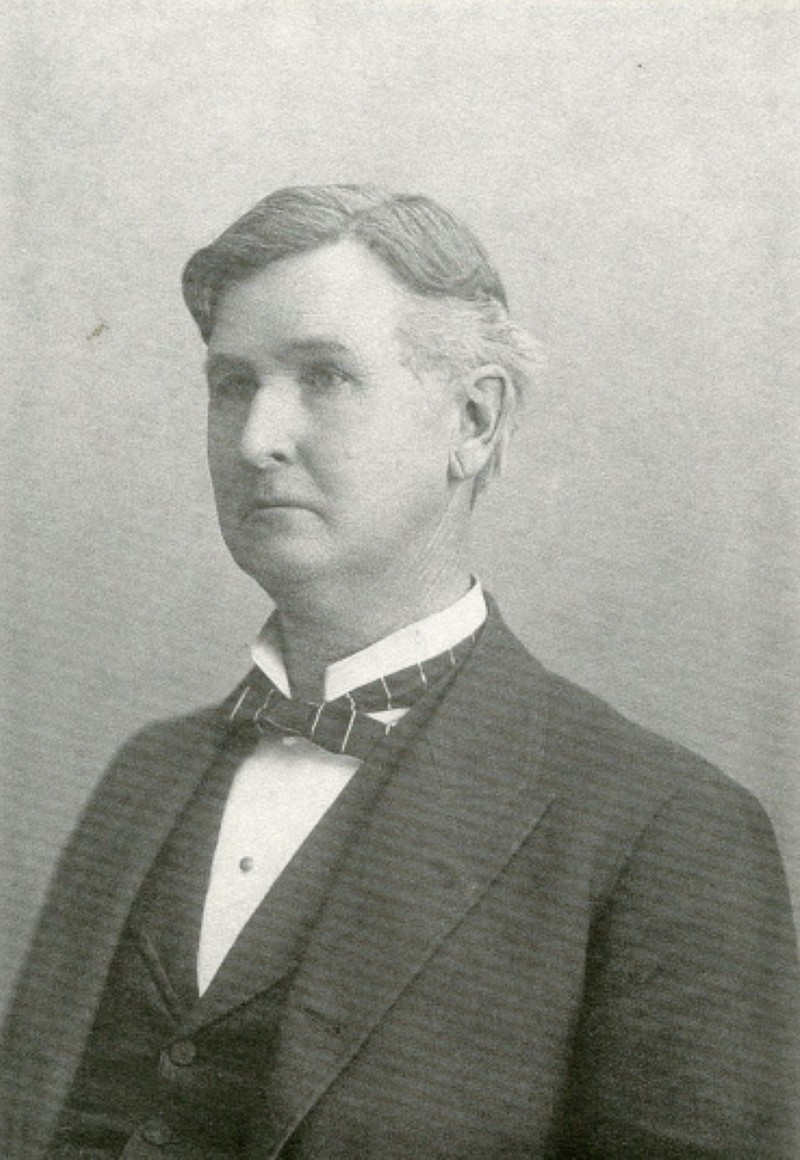Capitol Avenue, one of Jefferson City's oldest and most stately neighborhoods, has been plagued first by neglect and now tornadoes. A review of the history of this street serves to remind us how integral it has been in our city's development and the importance of preserving it.
Capitol Avenue's history is intimately intertwined with the history of the Missouri State Penitentiary and state government itself. The prison was here because Jefferson City was the site tenuously selected in 1825 as the capital of the newly ratified state. Lured by cheap prison labor, entrepreneurs soon followed. Against this backdrop an elite class of successful prison industrialists emerged, settling into a genteel life on Capitol Avenue, named East Main prior to 1920. Conveniently located close to the State Capitol, the downtown and MSP, they used their handsome profits to build large and elegant homes.
Very little remains of the first settlements on Capitol Avenue between the prison and the Capitol. But we can get a feel for street life from a remarkable collection of essays written in 1900-01 by longtime street resident Dr. Robert E. Young. Young captures the vibrancy of the street, the people, as well as the structures, including the log cabins that originally lined the street. His essays were collected in a volume called "Pioneers of High, Water and Main." Water Street is now State Street.
As a young man, Young enlisted in the Confederate army, seeing battle at Wilson's Creek and Lexington. He describes the tension that developed between Rebel and Union sympathizers co-existing on Capitol Avenue. Young relates a remarkable story of how the Union leader Gen. Thomas Lawson Price extended amnesty after the war to Gen. Gustavus Parsons and other Jefferson City rebels whom Price had known personally for many years.
In 1871, Young's parents built a house at 514 Capitol Ave. After the war, Robert and his bride lived next door at 516 Capitol Ave. Sadly, both of these houses were extensively damaged in the recent tornado.
In the early to mid-1800s, the residents of Capitol Avenue were mostly working-class families - state and city workers, prison guards, railroad employees and tradesmen with a few merchants scattered throughout. With livestock and vegetable gardens on their properties, the street was not yet the avenue of the privileged it would later become.
Little remains of the pre-1870 buildings on Capitol Avenue that Young describes; those that do remain are some of the oldest structures in Jefferson City. The Parsons House at 105 Jackson St., built in the 1830s, is the most significant. Gen. Gustavus Parsons, a personal secretary to Thomas Jefferson, moved here in 1847. He and his son, Mosby M. Parsons, both served the rebel cause in the Civil War. His daughter married Col. Austin Standish, also a rebel, who built the house at 103 Jackson St. The Parsons House had been abandoned and was recently acquired by the Jefferson City Housing Authority. It now needs a buyer to rescue it.
The Buescher House at 429 Capitol Ave., mentioned by Young in his essays, was built by John Gordon during the Civil War where a log cabin once stood.
The housing boom on Capitol Avenue started in earnest after 1870, becoming home to many prominent Jefferson Citians, including governors, mayors, high-ranking government officials, industrialists and bankers. It quickly became the preferred elite residential area of the wealthy. Their common bond was their connection to state government, while the wealthiest among them were the entrepreneurs who contracted for prison labor.
Lester Shepard Parker built a grand home for his family at 624 Capitol Ave. He had moved to Jefferson City to manage the Jefferson Shoe Co., a prison industry, then soon established his own business, the L. S. Parker Shoe Company.
James Houchin was first employed as a bookkeeper for the Star Clothing Company. After he rescued the company from near collapse in the mid-1890s, he was placed in charge, turning the company into a huge success. His home at 611 Capitol Ave. was built in 1905, largely from convict labor. Reportedly, it was built in a ravine that required tens of thousands loads of fill hauled in by inmates.
Charles Carson came to Jefferson City in 1905 after investing in the Central Broom Company. He bought the home at 606 Capitol Ave. from Judge Gavon Burgess, a Missouri Supreme Court judge. Carson was a "tinkerer" who designed a unique turn-table in his car port. He could park his car then rotate it 180 degrees so it was pointed outward.
Several bankers lived in the neighborhood: W. Q. Dallmeyer (600 Capitol Ave.), W. C. Young (514 Capitol Ave.), J. S. Fleming and W. A. Dallmeyer (615 Capitol Ave.). Gov. Lon Stevens lived in Ivy Terrace at 500 Capitol Ave. Two former mayors lived on adjacent Cherry Street. Numerous state officials, Supreme Court justices, newspaper editors, lawyers, doctors, prison wardens and superintendents also resided in this upscale neighborhood.
Although close to the prison, Capitol Avenue was a desirable and genteel place to live as the rhythms of the prison became part of everyday life. The entirely foreign and brutal world of the prison yard that would become known as "the bloodiest 47 acres in America" was separated from the peaceful life on Capitol Avenue by a mere 3-foot-thick wall.
This street with its elegant, irreplaceable architecture and its influential residents is an important part of our city's history. Capitol Avenue is a gem. We hope for consolidated efforts to ensure Capitol Avenue will be rescued from the neglect and more recently the storm damage to survive for future generations.
Jenny Smith is a retired chemist from the Missouri State Highway Patrol Crime Lab and former editor of HCJ's Yesterday and Today newsletter.
The unabridged version of this article may be found on page 4 of the archived newsletter at historiccityofjefferson.org/wp-content/uploads/2017/03/HCJ-newsletter-May-2015-final.pdf

